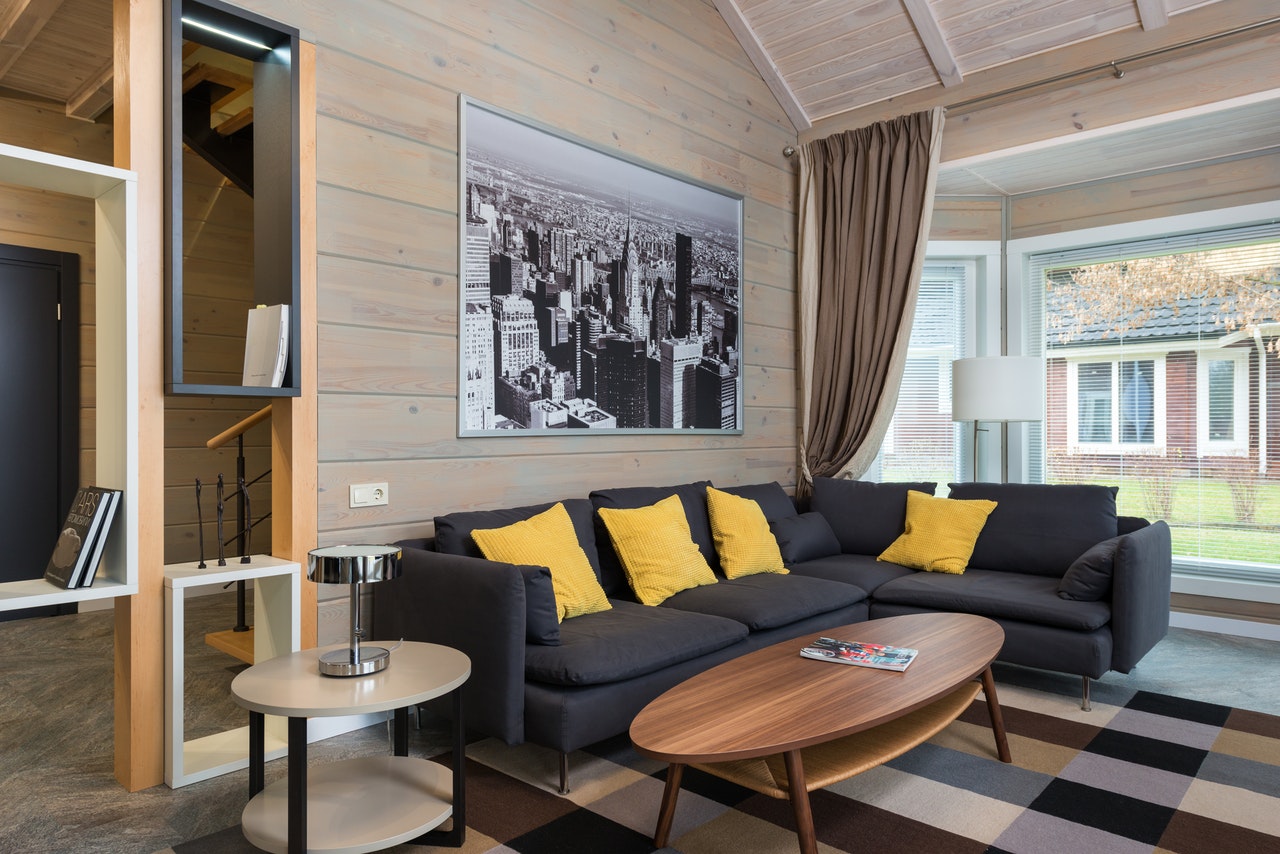Home Decor
Innovative Bedroom Lighting Ideas to Increase Your Bedroom Interior
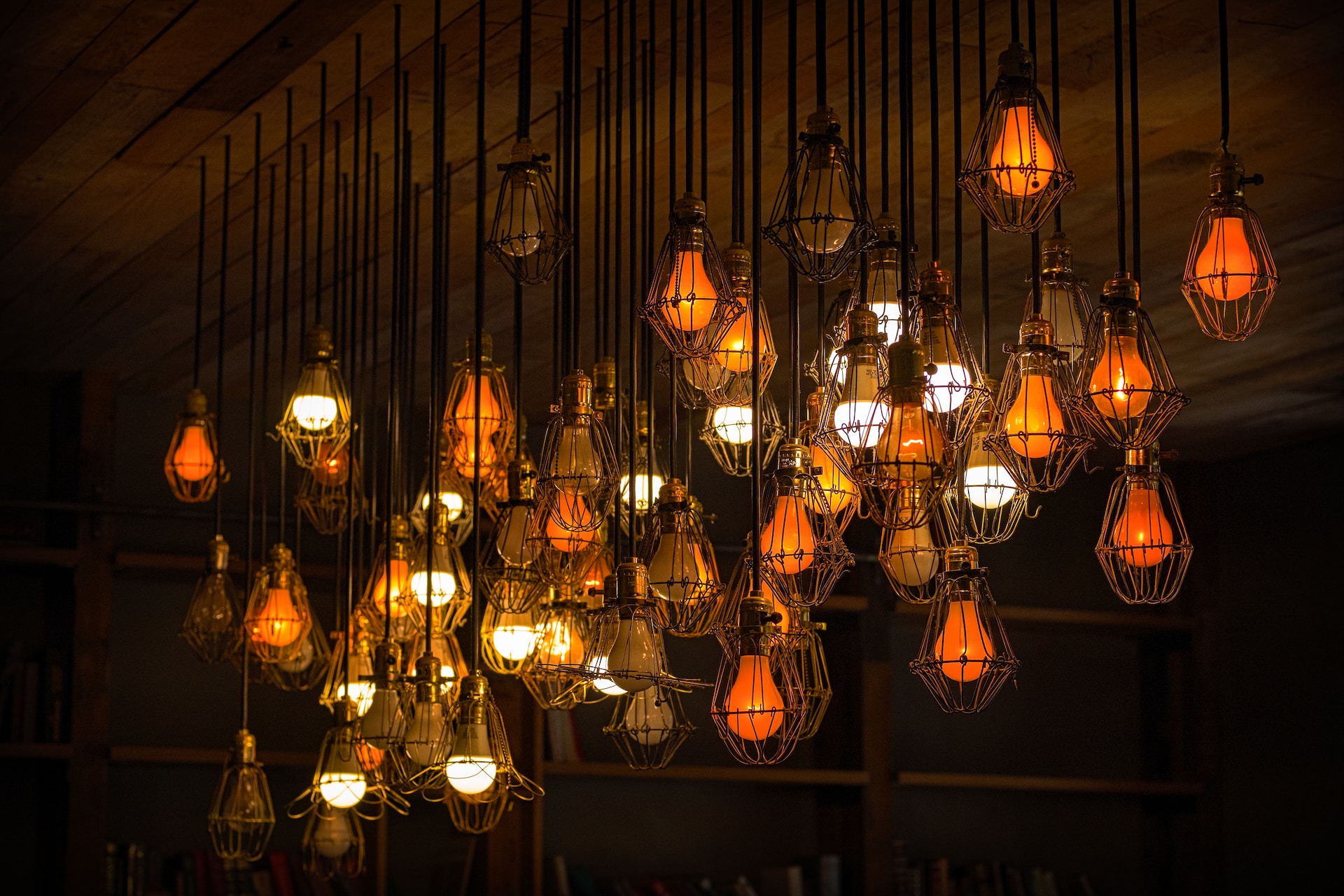
Are you tired of the same old dull lighting in your bedroom? Do you want to create a warm and inviting atmosphere that brightens up your space? Look no further! In this article, we will explore some innovative bedroom lighting ideas that will transform your room into a haven of relaxation and style. From creative fixtures to smart lighting solutions, we’ve got you covered. discover how to brighten your space with these innovative ideas.
What Is the Importance of Bedroom Lighting?
Lighting plays a crucial role in setting the mood and ambiance of a room, and the bedroom is no exception. A well-lit bedroom can enhance your mood, improve your sleep quality, and add a touch of elegance to your space. With the right combination of lighting fixtures and techniques, you can create a bedroom that not only looks beautiful but also feels comfortable and inviting. here we explore a variety of innovative bedroom lighting ideas that will help you transform your bedroom into a cozy sanctuary.
Types of Bedroom Lighting
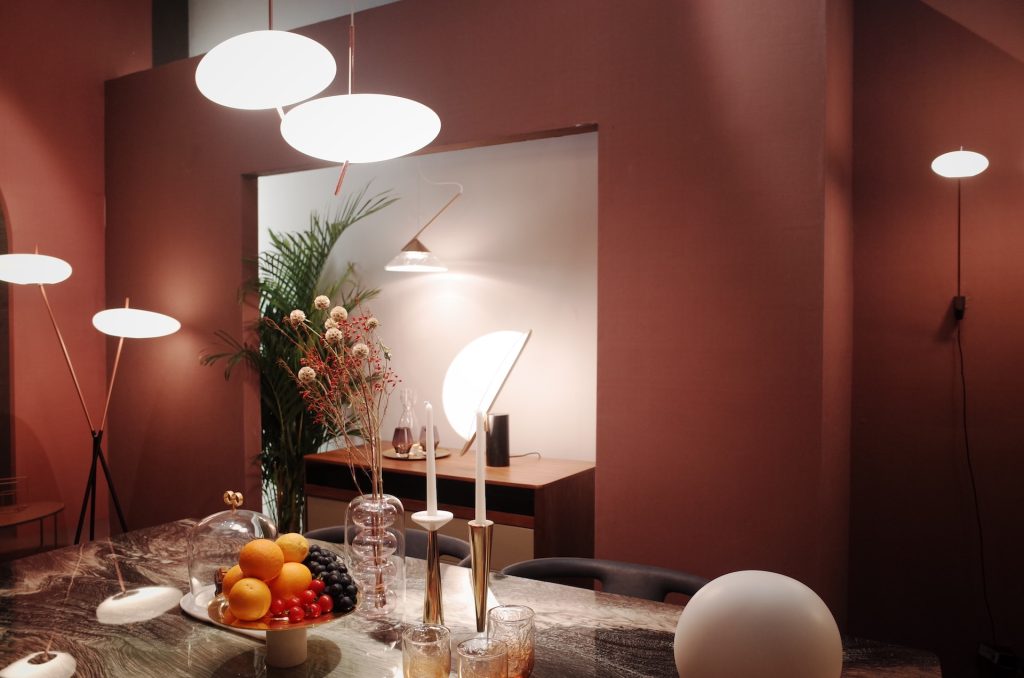
Before diving into specific lighting ideas, let’s explore the different types of bedroom lighting. Understanding these categories will help you create a well-balanced lighting scheme for your space.
1. Ambient Lighting
Ambient lighting serves as the foundation of any lighting design. It provides general illumination to the entire room, creating a warm and welcoming atmosphere. This type of lighting is often achieved through overhead fixtures, such as chandeliers, flush-mount lights, or recessed lighting.
2. Task Lighting
Task lighting focuses on specific areas or tasks within the bedroom. It provides ample light for activities like reading, studying, or applying makeup. Task lighting fixtures can include bedside table lamps, adjustable wall sconces, or pendant lights hanging above a desk or vanity.
3. Accent Lighting
Accent lighting is all about creating visual interest and highlighting architectural features or decorative elements in your bedroom. This type of lighting adds depth and dimension to your space. Examples of accent lighting include wall-mounted picture lights, LED strip lights behind headboards or under shelves, or track lighting directed toward artwork or focal points.
4. Natural Light
Natural light is an essential element in any well-designed bedroom. It not only brightens up the space but also brings in a sense of connection to the outdoors. Maximizing natural light can be achieved by using sheer curtains or blinds that allow sunlight to filter through while maintaining privacy. Now that we have a better understanding of the different types of bedroom lighting, let’s explore some innovative ideas to brighten up your space.
9 Innovative Bedroom Lighting Ideas to Brighten Up Your Space
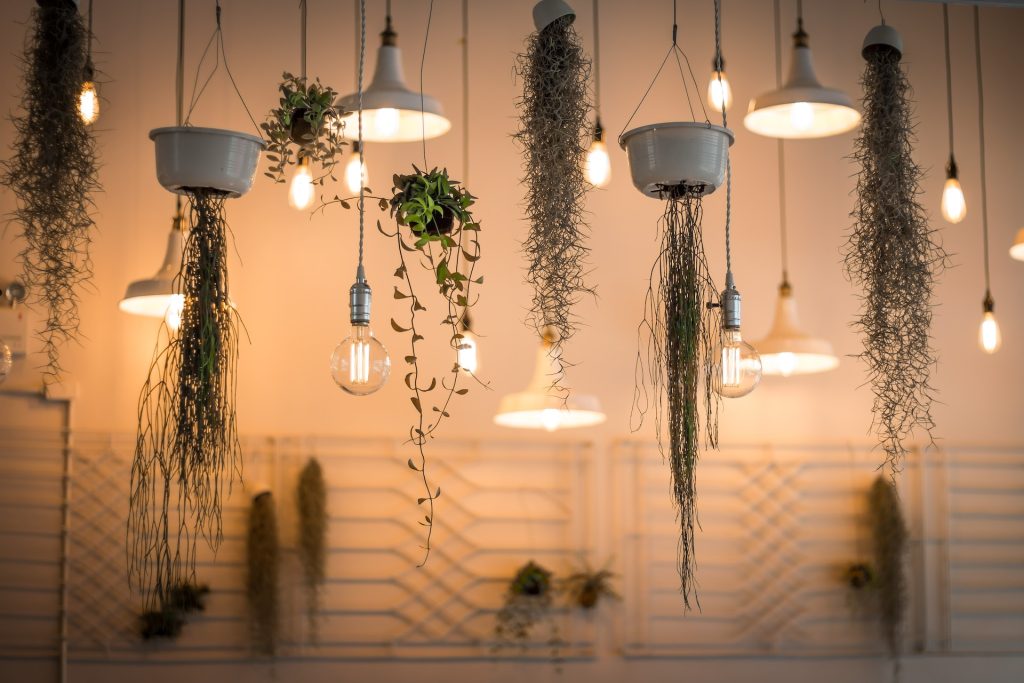
1. Layered Lighting
One of the most effective ways to create a warm and inviting atmosphere in your bedroom is by using layered lighting. Layered lighting involves combining different types of lighting to achieve the perfect balance between functionality and ambiance. By incorporating ambient, task, and accent lighting, you can create a visually stunning and practical bedroom environment.
To achieve layered lighting, consider using a combination of ambient fixtures, such as a statement chandelier or a series of recessed lights, to provide overall illumination. Add task lighting fixtures, like adjustable wall sconces or pendant lights, to provide focused light for reading or other activities. Finally, incorporate accent lightings, such as LED strip lights or track lighting, to highlight architectural features or decorative elements.
2. Natural Light
Nothing beats the natural glow of sunlight streaming into your bedroom. Harnessing natural light not only brightens up your space but also offers numerous health benefits. Natural light helps regulate your circadian rhythm, improves mood, and enhances the overall aesthetics of your bedroom.
To maximize natural light, keep your windows clean and unobstructed. Choose light-colored or sheer curtains that allow sunlight to filter through. Position your bed and furniture to take advantage of natural light during the day. If privacy is a concern, consider adding blinds or window films that offer both privacy and ample sunlight.
3. Accent Lighting
Accent lighting is a fantastic way to add drama and style to your bedroom. It draws attention to architectural features, artwork, or decorative elements, creating visual interest and depth. Here are some innovative ideas for incorporating accent lighting in your space.
Picture Lights
Install wall-mounted picture lights above your favorite artwork or photographs to make them stand out. These lights not only highlight the artwork but also create a beautiful focal point in your bedroom.
LED Strip Lights
Add a touch of modern elegance by installing LED strip lights behind your headboard or underneath shelves. These lights provide a soft and indirect glow, adding a cozy and intimate ambiance to your space.
Spotlights or Track Lighting
Use spotlights or track lighting to illuminate a collection of books, a gallery wall, or any other area you want to showcase. These adjustable lights allow you to direct the focus exactly where you want it. when using accent lighting, less is often more. Use it sparingly to avoid overwhelming the space and maintain a balanced lighting design.
4. Task Lighting
Task lighting is essential for specific activities in your bedroom, such as reading, working, or getting ready. Here are some innovative task-lighting ideas to consider.
Bedside Table Lamps
Choose stylish table lamps that complement your bedroom decor. Opt for adjustable lamps with a warm white or neutral light bulb to create a cozy reading nook.
Adjustable Wall Sconces
Install wall sconces on either side of the bed for focused reading light. Look for fixtures that can be adjusted to direct light exactly where you need it.
Pendant Lights
Hang pendant lights above a desk or vanity to provide ample lighting for tasks like applying makeup or working on a laptop. Choose fixtures with a diffuser or shade to prevent glare.
When planning your task lighting, consider the specific activities you’ll be performing in your bedroom and ensure that the lighting fixtures you choose provide adequate illumination for those tasks.
5. Statement Lighting
Statement lighting fixtures are eye-catching focal points that add a touch of glamour and style to your bedroom. They serve as artistic pieces that instantly elevate the overall design of your space. Here are a few innovative statements and lighting ideas.
Chandeliers
Hang a stunning chandelier in the center of your bedroom to create a luxurious and elegant atmosphere. Choose a design that complements your bedroom style, whether it’s modern, vintage, or bohemian.
Pendant Cluster Lights
Create a unique and mesmerizing display by hanging a cluster of pendant lights at different heights above your bed or in a cozy seating area. This arrangement adds visual interest and serves as a conversation starter.
Oversized Floor Lamps
Place an oversized floor lamp in a corner of your bedroom to make a bold statement. Choose a lamp with an interesting shape or unique materials to add a touch of drama to the space. Statement lighting fixtures not only provide functional lighting but also serve as stunning decorative elements that showcase your personal style.
6. Smart Lighting
In the era of smart homes, it’s no surprise that smart lighting has become increasingly popular. With smart lighting systems, you can control the brightness, color, and even the scheduling of your bedroom lights using your smartphone or voice commands. Here are some innovative ways to incorporate smart lighting into your bedroom:
Smart Bulbs
Replace your traditional light bulbs with smart bulbs that can be controlled using a mobile app or voice assistant. Adjust the brightness and color temperature to create the perfect ambiance for any occasion.
Smart Switches and Dimmers
Install smart switches and dimmers to control multiple lights or light zones in your bedroom. Program different lighting scenes for relaxing, reading, or getting ready for bed.
Motion-Activated Lighting
Set up motion-activated lights in your bedroom to eliminate the need for fumbling around in the dark. These lights automatically turn on when you enter the room or walk past certain areas. Smart lighting not only adds convenience but also allows you to customize your bedroom lighting to suit your preferences and daily routines.
7. Lighting Fixtures
When it comes to bedroom lighting, the fixtures themselves can make a significant impact on the overall design and ambiance. Here are some creative and unique lighting fixtures to consider for your space.
Sculptural Lighting
Choose lighting fixtures that double as artistic sculptures. Look for fixtures with interesting shapes, textures, or materials that can serve as statement pieces in your bedroom.
Hanging Pendants
Opt for hanging pendants in unconventional materials, such as rattan, woven fibers, or glass orbs, to add a touch of bohemian or coastal charm to your bedroom.
Nature-Inspired Fixtures
Incorporate fixtures inspired by nature, such as branch-like chandeliers, floral-shaped wall sconces, or pendant lights that resemble clouds or stars. These fixtures bring a sense of tranquility and serenity to your space. By choosing creative and unique lighting fixtures, you can add a personal touch and create a visually captivating bedroom environment.
8. Lighting Placement
Proper lighting placement is key to ensuring that every corner of your bedroom is well-lit and functional. Here are some tips to consider when placing your lighting fixtures:
Overhead Lighting
Install overhead lighting fixtures, such as chandeliers or ceiling fans with built-in lights, in the center of the room to provide overall illumination. Make sure the fixture is centered above the bed or in a central location.
Task Lighting
Place bedside table lamps on each side of the bed for easy access to reading light. Ensure that the lamps are at a height that allows you to comfortably read without straining your eyes.
Vanity Lighting
If you have a vanity or a dedicated makeup area, place wall sconces or pendant lights above the mirror to provide even lighting for grooming and makeup application.
Closet Lighting
Illuminate your closet with recessed lights or LED strip lights to make it easier to find your clothes and accessories. Consider motion-activated lights for added convenience. By strategically placing your lighting fixtures, you can ensure that every corner of your bedroom is well-lit and functional for your daily activities.
9. DIY Lighting
If you’re feeling adventurous and want to add a personal touch to your bedroom lighting, consider some fun and creative DIY lighting projects. Here are a few ideas to get you started:
Mason Jar Lights
Transform ordinary mason jars into charming pendant lights by adding a bulb socket and hanging them from the ceiling. You can even paint or decorate the jars to match your bedroom decor.
Fairy Light Canopy
Create a dreamy and magical atmosphere by hanging fairy lights in a canopy formation above your bed. Simply drape the lights from the ceiling or use curtain rods to create a canopy effect.
DIY Paper Lanterns
Craft your own paper lanterns using colorful or patterned paper. Hang them at different heights to add a whimsical touch to your bedroom lighting. DIY lighting projects allow you to unleash your creativity and add a personalized touch to your bedroom. Just make sure to follow safety guidelines and consult online tutorials or guides for step-by-step instructions.
Common Lighting Mistakes to Avoid
While exploring innovative bedroom lighting ideas, it’s essential to be aware of common mistakes that can detract from your overall design and functionality. Here are some common lighting mistakes to avoid.
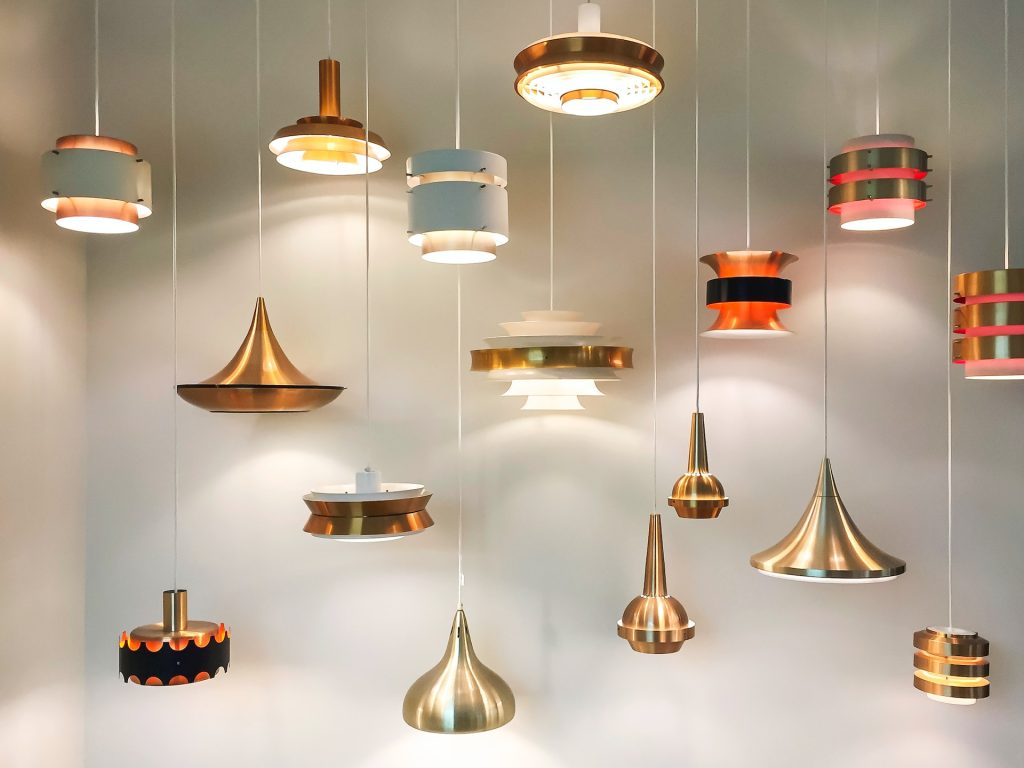
1. Insufficient Lighting
Failing to provide adequate lighting in your bedroom can result in a dim and unwelcoming atmosphere. Make sure to incorporate multiple sources of light to ensure proper illumination.
2. Poorly Placed Fixtures
Placing lighting fixtures in the wrong locations can create unflattering shadows or glare. Consider the activities you’ll be performing in each area of your bedroom and position the fixtures accordingly.
3. Ignoring Dimmers
Dimmers are a fantastic addition to any bedroom lighting design. They allow you to adjust the brightness levels according to your needs and create different moods for various occasions.
4. Choosing the Wrong Bulbs
Selecting the wrong type of bulb can impact both the quality of light and energy efficiency. Consider the color temperature, lumens, and energy rating of the bulbs to ensure they align with your preferences and requirements. By avoiding these common lighting mistakes, you can create a well-lit and visually appealing bedroom that meets both your functional and aesthetic needs.
FAQs
To make your bedroom look brighter, incorporate a combination of ambient, task, and accent lighting. Use light-colored or sheer curtains to allow natural light to filter through, and consider adding mirrors to reflect light and create the illusion of a larger space.
For bedroom lighting, a warm white color temperature (around 2700K to 3000K) is ideal. It creates a cozy and inviting atmosphere, perfect for relaxation and winding down at the end of the day.
Absolutely! LED lights are an excellent choice for bedroom lighting. They are energy-efficient, long-lasting, and available in a wide range of color temperatures and styles.
To create a romantic ambiance, consider using dimmable lights, such as pendant lights with warm white bulbs. Place candles strategically around the room for a soft and intimate glow. Don’t forget to add some fairy lights for a touch of magic.
Yes, there are plenty of lighting options for small bedrooms. Consider using wall-mounted sconces to save space on bedside tables, or opt for recessed lighting to provide illumination without taking up precious floor or surface area.
Absolutely! Mixing different styles of lighting fixtures can add visual interest and create a unique look in your bedroom. Just make sure that the fixtures complement each other and contribute to the overall design aesthetic.
Conclusion
By implementing these innovative bedroom lighting ideas, you can transform your space into a haven of relaxation and style. From layered lighting to smart solutions and DIY projects, there are endless possibilities to brighten up your bedroom. Be aware of the Consider the different types of lighting, experiment with unique fixtures, and avoid common lighting mistakes. With the right lighting design, you can create a bedroom that not only looks beautiful but also enhances your mood and promotes a peaceful atmosphere.

Home Decor
How to Choose Strata Painting Services in London

London is home to countless high-rise apartments, office complexes, and historic buildings, all requiring regular upkeep to maintain their charm and durability. One crucial aspect of property maintenance is strata painting, which ensures interior and exterior shared spaces remain visually appealing and well-protected.
Unlike standard painting jobs, strata painting involves special coatings, weatherproofing, and compliance with strict safety regulations to meet the needs of multi-unit buildings.
With London’s frequent rainfall, pollution, and varying architectural styles, choosing a reliable strata painting service isn’t just about aesthetics—it’s about long-term protection and value preservation.
Whether it’s a modern glass-covered skyscraper in Canary Wharf or a centuries-old residential complex in Kensington, the right painting professionals can help enhance curb appeal while ensuring structural integrity.
What Does Mean By Strata Painting?

Strata Painting is a specialized painting service designed for multi-unit properties like apartment buildings, townhouses, and commercial complexes. It ensures that shared areas such as hallways, staircases, lobbies, and exteriors are well-maintained and protected against weather damage.
For instance, in central London, high-rise buildings often require weatherproof coatings to withstand frequent rain and pollution. In contrast, heritage buildings in Westminster may need specialized paints to preserve their original look while complying with heritage protection laws. This makes strata painting essential for maintaining property aesthetics, longevity, and value.
Key Factors of Choosing Strata Painting Services in London

1. Use of Drones for Building Inspections Before Painting
Drones have revolutionized building inspections by providing aerial views of high-rise strata properties, allowing for detailed assessments of structural damage, peeling paint, and moisture penetration. This reduces the need for scaffolding-based manual inspections, cutting costs and improving safety. According to a 2023 study, over 40% of London’s property management firms have integrated drone inspections for maintenance planning, proving its growing popularity in the industry.
2. Use of Biodegradable and Non-Toxic Paints
With stricter UK environmental regulations, London-based strata painting companies are shifting towards biodegradable, non-toxic, and low-VOC (Volatile Organic Compound) paints. These eco-friendly options improve indoor air quality while minimizing harmful chemical emissions. Reports indicate that over 60% of newly developed residential buildings in London now use low-VOC paints to meet sustainability standards.
3. Green Certifications for Environmentally Responsible Contractors
Many strata painting contractors in London seek BREEAM (Building Research Establishment Environmental Assessment Method) and LEED (Leadership in Energy and Environmental Design) certifications to showcase their commitment to sustainability. Buildings with BREEAM-certified painting solutions have been shown to reduce energy consumption by up to 25% annually, making them an attractive option for property developers and management companies.
4. Self-Cleaning and Heat-Reflective Coatings
With London’s variable climate, self-cleaning coatings have gained traction due to their ability to reduce dirt accumulation and grime buildup on painted surfaces. These coatings, often made with titanium dioxide-based formulas, break down organic dirt through photocatalysis. Similarly, heat-reflective coatings help reduce indoor cooling costs in London’s commercial buildings by reflecting UV rays. Studies indicate that heat-reflective paints can lower interior temperatures by up to 5°C, cutting energy expenses by 15-20% annually.
5. 3D Visualization Tools for Previewing Color Schemes
Choosing the right color scheme is a crucial decision in strata painting. 3D visualization tools allow property owners, managers, and residents to preview multiple color options and finish in real-time before painting begins. These tools, widely used by top painting contractors in London, help reduce color mismatches, improve client satisfaction, and streamline the decision-making process.
6. Automated Painting Equipment
Automation is transforming the strata painting industry by improving efficiency, safety, and consistency. High-rise buildings in London are increasingly adopting robotic painting systems that use precision-controlled spray mechanisms to coat large surfaces evenly. These systems reduce labor costs by up to 30% and enhance safety by minimizing human exposure to hazardous heights and harsh weather conditions.
7. Integration of Solar-Reflective Coatings to Reduce Energy Consumption
Solar-reflective coatings are gaining popularity in London’s high-rise and commercial strata projects. These coatings are designed to reflect UV radiation, preventing excessive heat absorption and reducing the reliance on air conditioning. Studies suggest that buildings treated with solar-reflective coatings can cut cooling costs by up to 20%, particularly in densely populated areas like Canary Wharf and Central London.
8. Smart Coatings with Antimicrobial Properties
Post-pandemic hygiene concerns have led to the widespread adoption of antimicrobial coatings in London’s residential and commercial strata properties. These advanced coatings inhibit bacterial and mold growth, making hallways, lobbies, and shared areas more hygienic. Popular in hospitals and commercial offices, these coatings are now being used in luxury residential complexes to improve indoor air quality and overall sanitation.
9. Water-Based Paints Instead of Oil-Based Solutions
Switching to water-based paints has significantly reduced pollution and carbon footprints in London’s painting industry. These paints dry faster, emit fewer chemicals, and are easier to clean up, making them a preferred choice for strata projects aiming to comply with environmental regulations. Data from the UK Green Building Council (UKGBC) indicates that over 70% of professional painting projects in London now use water-based coatings, marking a shift towards greener practices.
10. Recycling and Waste Reduction Initiatives
Many strata painting contractors now offer paint can recycling programs and waste reduction initiatives. Several London-based firms partner with recycling facilities to repurpose leftover paint, reducing landfill waste and promoting sustainability. This trend aligns with the UK government’s 2030 sustainability goals, pushing more companies to embrace eco-conscious disposal practices.
11. Automated Painting Equipment
Automation is transforming the strata painting industry by improving efficiency, safety, and consistency. High-rise buildings in London are increasingly adopting robotic painting systems that use precision-controlled spray mechanisms to coat large surfaces evenly. These systems reduce labor costs by up to 30% and enhance safety by minimizing human exposure to hazardous heights and harsh weather conditions.
Common Challenges for Strata Painters in London
- Weather conditions: London’s high humidity and frequent rain require special coatings. Unpredictable weather patterns can delay painting schedules and increase drying time, making it essential to choose weather-resistant paints.
- Regulatory compliance: Following UK Work at Height Regulations 2005 and health and safety laws is mandatory. Additional permits may be required for buildings located in heritage areas or conservation zones.
- Minimal disruption: Painters must work efficiently around residents and businesses. This means planning schedules to avoid peak hours, working in phases, and using quick-drying, low-odor paints to reduce inconvenience.
- Access restrictions: High-rise and multi-story buildings require specialized access techniques such as rope access, scaffolding, or hydraulic lifts. Ensuring compliance with safety regulations is critical for worker safety.
- Specialized Coatings and Compliance: Buildings in London may require fire-retardant coatings, anti-mold treatments, or UV-resistant paints to comply with building safety and environmental standards.
- Surface Preparations: Addressing existing cracks, leaks, or damaged surfaces before painting begins is vital for long-lasting results. This may involve power washing, applying primers, and fixing structural defects.
- Tenant Communication: Informing tenants about timelines and expected disruptions is key to maintaining a positive relationship. Property managers must provide clear notices regarding paint odors, restricted access areas, and safety precautions to ensure cooperation.
- Logistics and Scheduling: Coordinating painting schedules with property managers and tenants is crucial to prevent delays. Large-scale projects require meticulous project management to allocate labor and resources effectively.
- Budget Constraints: Strata painting projects often operate on tight budgets. Proper cost estimation, avoiding hidden fees, and choosing cost-effective yet durable paint solutions can help balance quality and affordability.
Home Decor
Choosing and Fitting out your new Retail Location
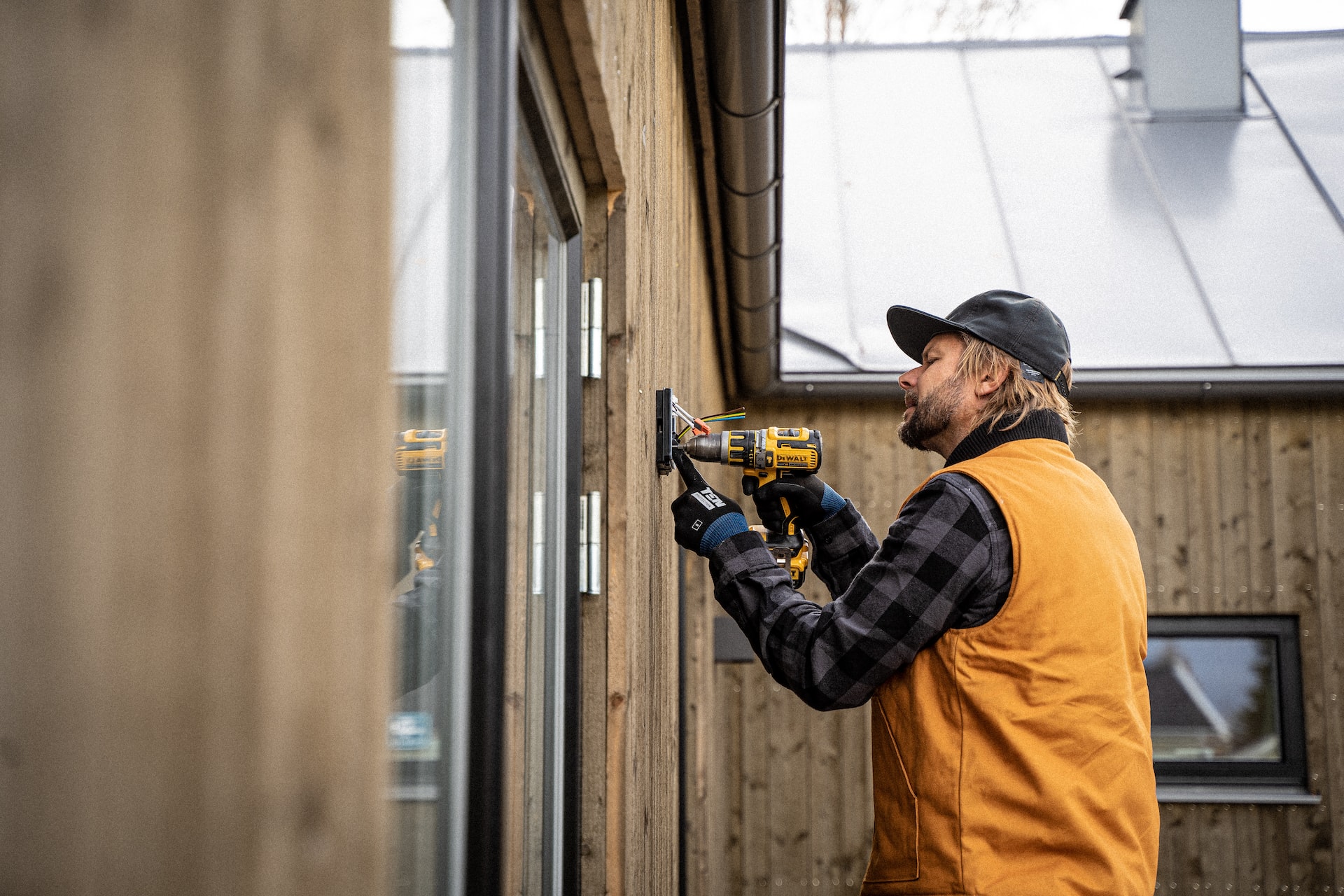
For many small businesses, opening a retail location is a dream come true. It can however be a very stressful experience, with so much to consider and organize.
Customers prefer their shopping experience when the shop is well-designed and maintained. If they are satisfied with their experience, they will be more likely to make purchases, stay for longer and also return. Therefore, getting it right is very important. It is also useful to have a good shop layout and plan in case you ever open other stores, as it will make the process a lot quicker and easier.
Planning your strategy for shop fitting will make your life a lot easier, saving both time and money. Establishing a schedule is really helpful as you can better understand when you want things done and estimate a date of when the shop will be ready to open. Establishing a budget will give you an idea of how much you can spend on certain areas and where you may need to try to save money. A shop fitting expert will be able to advise you on any aspects of the process, or complete the whole job if you want!
1. Plan your space before fitting out your shop
You must first consider the type of shopping experience you want to provide. Think about how you want your customers to view the store and how you can ensure they see the right things. Well-designed areas can encourage customers to see all they need to and even to stay in the shop longer.
When it comes to layout, you must think carefully. Research has found the majority of customers turn right when they first walk into the shop. Therefore it may be useful to strategically place your most enticing offers and displays in these areas.
Functionality is the top priority. Usability is just as, sometimes even more important within retail spaces than aesthetic factors. You must keep in mind the room’s key purposes, and what the customers’ motivations will be when entering the shop.
Lighting is another important aspect to consider when designing your shop. Different tones of lighting can be used to give the store more or less color, and enhance the products on sale. Ambient lighting can be used for a softer look, or spotlights can be used for maximum brightness. Play around with different types to see what best fits your brand and your space.
2. Decide on your budget
Do some research to get a sense of what this would cost and use this information to create a reasonable budget. Decide on what your priorities will be, and allocate more budget to them if needed. This might take a bit of time to research but it will be worth it to ensure you have a clear view of the costs involved. It will also ensure you don’t get overcharged for any products or services.
3. Hire a shop fitting specialist
A shop fitting expert will have the knowledge and experience to understand how your shop can work and look best. They will have a unique view of how it can be designed and will ultimately ensure your shop has the best layout possible. They also will have a large network of contacts within the industry so will be able to use top-quality services and suppliers and they will have good prices negotiated with them. They will also have an understanding of health and safety issues, so they will ensure the shop complies with safety regulations. For example, they will be able to quickly see if there are any potential trip hazards or fire dangers and advise what to do to solve the issue.
You could consider contacting a local carpenter who can help with shelving and other fittings at a more reasonable rate if you are not able to afford a shop fitter. You will also need to hire a skilled electrician for electrical installations. Choosing one that has experience in shop fitting electrical installation would be the best option.
4. Purchase furnishings and fixtures
You will need to buy shelving systems, display stands, islands, or railings to organize your shop. Investing in good quality fixtures may help you out in the long run. You will also want some simple shelving for storing cupboards and back-of-house storage, and a counter for payments. Consider how much stock you want to be on show and how it can be best displayed. For example, a boutique clothing store may want fewer items on the shop floor but nicely displayed, whereas a discount store will have lots of stock tightly packed in. Measure everything accurately, especially when ordering online, to ensure everything will be the right fit.
Purchasing pre-owned equipment can help you save money. If you’re looking for secondhand retail equipment, check out websites like Gumtree, Preloved.co.uk, and eBay.
5. Purchase shop supplies
You will need to purchase a variety of other supplies needed for your shop. You may need a label maker to make price stickers or a tagging gun to attach price tags to your products. You may need additional point-of-sale labeling, signs, shelf labels, and promotional marketing materials. You will need a till, an electric point-of-sale system for processing payments at the point of sale. When it comes to payments, it is good to be able to accept as many different options as possible to ensure you aren’t losing any customers. While a lot use contactless options nowadays, some customers do use cash so you must be able to cater to both.
A safe can also be useful to consider buying, as it can hold your shop’s proceeds safely. Consider purchasing CCTV cameras, particularly in blind spots to discourage shoplifters and provide your store with extra security. A burglary alarm may also be worth buying for when no one is in the shop. Ensure fire alarms and smoke detectors are in the right places and regularly test these.
Other essential services like rubbish collection, water, gas, electricity, internet, and insurance must all be taken into consideration. Again, it might be worth doing some research to find reasonably priced suppliers.
There is a lot you will need to organize and plan, so make sure you allocate yourself enough time to get it done. Spending a bit of extra time doing more research could help you save a lot of money and will ensure you get it done right.
Home Decor
Cleaning in Central London: Is DIY Cleaning Effective or Should You Hire Professionals in London?

Central London, with its grandeur and historic charm, stands as a testament to time, holding stories of eras gone by within its brick and mortar. Wander its streets, and you’ll pass iconic landmarks, grand townhouses, quaint cafes, bustling markets, and corporate skyscrapers, all humming with life. But, as every resident knows, life in Central London isn’t just about enjoying the sights and sounds. It’s also about maintaining and upkeeping these spaces, ensuring that the charm remains untarnished. This leads to an inevitable question every Central London dweller grapples with: “Should I roll up my sleeves and clean my space myself, or is it wiser to hire a professional?” The hustle and vibrancy of Central London, combined with its unique challenges, makes this decision particularly compelling.
Cleaning By Yourself

Embarking on a DIY cleaning journey is akin to taking a self-guided tour through the myriad streets of Central London. There’s an unparalleled sense of discovery and accomplishment in every corner cleaned and every stain vanquished. DIY cleaning empowers individuals, giving them full control over their environment. You decide on the products, ensuring they’re in line with your values, be it eco-friendliness or a particular scent preference. Additionally, the hands-on approach fosters a deep connection with one’s living space, understanding its every nook and potential challenge. However, it’s also essential to remember that this route demands time, energy, and a fair amount of dedication. Just as navigating Central London’s streets requires a keen sense of direction and occasional patience, DIY cleaning necessitates a commitment to learning and adapting.
Pros of DIY Cleaning in Central London

1. Save Money
One of the primary benefits of DIY cleaning in Central London, or anywhere for that matter, is the potential savings. The cost of hiring professional cleaning services can add up, especially if done regularly. On the other hand, if you decide to clean yourself, you only have the initial outlay for cleaning products. Over time, this can lead to substantial savings. It’s like cooking at home versus eating out; the former is almost always more budget-friendly.
2. Choose Products
Going the DIY route gives you the luxury of choice. Central London has a plethora of shops selling a variety of cleaning products. Have a penchant for lavender-scented floor cleaners? Or perhaps you’re particular about using eco-friendly, biodegradable products? Cleaning yourself means you get to choose exactly what goes into maintaining your space, ensuring it aligns with your personal preferences and ethical choices.
3. On Your Time
The beauty of DIY cleaning lies in its flexibility. Central London life can be unpredictable, with work commitments, social events, and other unforeseen occurrences. Not being tied down to a professional cleaner’s schedule means you can clean at 2 a.m. or 2 p.m., whatever works best for you. It’s about setting your rhythm and sticking to it.
4. Personal Touch
Every home in Central London, whether a modern flat or a historic townhouse, has its quirks. You’re best acquainted with that stubborn corner or the delicate surface that requires a gentler touch. DIY cleaning ensures that your home is cared for with a familiarity and affection that only you can offer. It’s about knowing your space inside out and tending to its unique needs.
5. Immediate Action
There’s a sense of immediacy and responsiveness with DIY cleaning. Picture this: you accidentally knock over a glass of red wine on your white rug. Instead of scheduling a cleaner and watching the stain set, you can take immediate action, armed with your arsenal of cleaning supplies. Quick response times often mean lesser damage and more effective cleaning. After all, in the lively backdrop of Central London, who wants to wait?
6. Stay Fit
Picture the bustling streets of Central London. Now, imagine the energy of the city channeled into a cleaning spree in your home. Scrubbing, vacuuming, and even the simple act of dusting can elevate your heart rate and get those muscles working. For those who skip the gym, a thorough cleaning session can be an unexpected way to burn calories. In a way, every push of the mop and every sweep of the broom becomes a mini-exercise, making your home shine while giving you an invigorating workout. here are some expert cleaning tips that you need to know.
7. Safety
Living in the heart of Central London, amidst its vast urban sprawl, one often yearns for personal safety and peace of mind. When you handle your cleaning, you’re in total control of what products are used. No need to worry about strong chemicals or substances that could harm pets or family members. It’s about ensuring your haven remains uncontaminated and safe, preserving the sanctity of your personal space.
8. Learning
Just like Central London constantly evolves and adapts, so does your cleaning prowess with time. Every stain faced and every challenge overcome becomes a lesson. Maybe you’ll discover that baking soda works wonders in a greasy oven or that lemon is the answer to limescale. As time progresses, your cleaning toolkit of tricks will expand, making each subsequent clean quicker and more effective. It’s a journey of discovery, right in the comfort of your home.
9. Control
Central London, with its ever-present hum of activity, can sometimes feel overwhelming. In such an environment, the sanctuary of one’s home becomes even more vital. By undertaking your cleaning, you ensure that the only people within your sanctuary are those you trust. There’s a comfort in knowing that your personal space remains undisturbed, your belongings untouched by unfamiliar hands. It’s all about maintaining a personal, controlled environment amidst the city’s buzz.
10. Satisfaction
Just like the pride one feels in calling Central London home, there’s a profound sense of accomplishment in looking around a freshly cleaned space and knowing it’s all your handiwork. Each gleaming surface and each spotless corner stands as a testament to your effort. The satisfaction derived from a job well done, from seeing your home at its best, is unparalleled. It’s a feeling of accomplishment, akin to conquering a piece of Central London, one clean room at a time.
Cons of DIY Cleaning in Central London

1. Time-Consuming
Living in Central London, with its kaleidoscope of activities and events, there’s always something to engage with. Yet, DIY cleaning often demands hours of dedicated effort. From scrubbing the bathroom tiles to ensuring the kitchen shines, it can be a day-long affair, often stretching into your precious weekends. This commitment can mean missing out on a sunny afternoon in Hyde Park or a visit to the latest pop-up cafe.
2. Missed Spots
Even the most meticulous among us might overlook certain areas. Professionals, with their trained eyes, are adept at identifying and addressing dirt in sneaky spots – like the underside of a shelf or the gap behind a radiator. In the vast landscape of a Central London home, some spots might just elude the untrained eye.
3. Lack of Expertise
No matter how dedicated, certain stains can stump the best of us. Be it a wine stain on a cherished rug or stubborn grime on the oven, without the know-how, these can turn into persistent issues. Professionals often come armed with techniques honed over the years, something a DIY approach might lack.
4. No Heavy Equipment
A typical Central London flat might have a vacuum and some basic cleaning tools. But professionals bring in heavy-duty equipment – steam cleaners, high-power vacuums, and more. Such equipment can tackle deep-seated dirt and provide a level of cleanliness that’s tough to achieve with standard tools.
5. Can Be Tiring
After a long week navigating Central London’s hustle and bustle, cleaning can feel like running a marathon. The physical effort, combined with the mental concentration, can be exhausting, leaving you spent and devoid of energy for other pursuits.
6. Resource Heavy
An amateur cleaner might end up using more water for mopping or keeping the vacuum running longer than necessary. This can inadvertently lead to a higher utility bill, not to mention the environmental implications. Efficient use of resources is both eco-friendly and wallet-friendly.
7. Not Always Efficient
While there’s a charm in the DIY approach, it might not always be the quickest route. Professionals, with their systematic methods, can often achieve more in less time. What might take you a full day could be a matter of hours for a seasoned cleaner.
8. Risk of Damage
Central London homes, with their blend of modern aesthetics and vintage charm, require care. Using the wrong cleaning agent on a wooden surface or scrubbing a delicate fabric can cause irreversible damage. Without expert knowledge, such mishaps are potential pitfalls.
9. Storage
Cleaning supplies, in all their variety, demand space. Central London homes, often pressed for space, can feel cluttered with bottles, mops, buckets, and more. Storing these efficiently becomes another task in itself.
10. Can Get Repetitive
The romance of cleaning, if any, can wear thin over time. Doing the same tasks week in, and week out, can feel mundane and monotonous. In a city that offers new experiences at every corner, cleaning can start feeling like a repetitive chore, devoid of novelty.
Hire Cleaning Professionals in Central London

Engaging the services of cleaning professionals in Central London is like hiring an expert tour guide for a historic landmark. You’re assured of depth, precision, and a wealth of experience. Professionals come armed with the latest tools and techniques, ensuring that every inch of your living space gets the meticulous attention it deserves. They offer the luxury of time – while they work their magic, you’re free to pursue other passions or simply relax. Moreover, Central London’s cosmopolitan nature means access to a variety of cleaning services tailored to specific needs, from eco-friendly solutions to specialized deep cleans. Yet, this convenience comes at a price and relinquishes some personal control. Just as an expert tour might skip a spot you find fascinating, professional cleaners might not always align with every minute preference.
Pros of Hiring a Cleaning Professional In Central London

1. Expert Clean
Navigating the complexities of a thorough cleaning requires a level of expertise that professionals have honed over many years. Just as the architectural wonders of Central London are best appreciated by those knowledgeable in history, the intricacies of cleaning are best addressed by experts. Professionals are trained to identify and tackle stubborn stains, know the best techniques for various surfaces, and navigate the trickiest of spots with ease. It’s like having an artisanal craftsman at work, ensuring every nook and cranny of your Central London home gleams with perfection.
2. Time-Saving
Central London pulsates with a rhythm of its own, offering a plethora of experiences, from theatre visits to riverside strolls. Hiring professionals ensures that your time isn’t consumed by the arduous task of cleaning. Instead of spending hours scrubbing and polishing, you can immerse yourself in the delights of the city, or simply enjoy a quiet afternoon with a book. In essence, you’re trading cleaning hours for leisure moments, making the most of what Central London has to offer.
3. Better Tools
Much like a seasoned chef arriving with a set of gourmet tools, professional cleaners come equipped with top-of-the-line equipment. This isn’t just your everyday vacuum or mop; these are specialized tools designed to achieve a deep clean, tackling dirt and grime that might remain elusive to conventional cleaning methods. Whether it’s a high-powered steam cleaner that rejuvenates your carpets or a state-of-the-art scrubber that makes your floors shine, these tools elevate the cleaning quality, ensuring your Central London home gets the royal treatment it deserves.
4. Stress-Free
The daily hustle of Central London, as exhilarating as it is, can also be taxing. Amidst the bustle, the idea of coming home to a cleaning task can feel daunting. Entrusting this responsibility to professionals takes a weight off your shoulders. There’s an immense comfort in knowing that your home will be spotless without you moving a muscle. Imagine enjoying a serene sunset over the Thames, knowing that by the time you return, your living space will be in impeccable order. It’s a luxury, a break from chores, allowing you to truly relax.
5. Consistent Results
There’s a rhythm and reliability with professionals that’s hard to replicate in DIY efforts. Just as you can expect consistent service at your favorite Central London bistro, professional cleaners ensure the same level of pristine cleanliness every single time. No fluctuations, no missed spots—just a predictable, high-quality clean that gives you peace of mind. It’s about knowing that regardless of the challenges your space presents, the outcome will always be consistently stellar.
6. Tailored Packages
Navigating Central London’s diverse residences requires a flexible approach. Many professional cleaning services have recognized this and offer bespoke packages that are moulded to individual needs. Whether it’s a loft requiring special attention or a townhouse with specific cleaning demands, these tailored services ensure that every home gets the exact care it necessitates, reflecting its unique character.
7. Insured Services
In the rare instance where an unexpected mishap occurs, many professional cleaners come with the assurance of insured services. This means that if something is accidentally damaged or broken, the liability is on them. It’s an added layer of security, ensuring that your precious belongings in Central London are always safeguarded.
8. Deep Clean
Professionals don’t just clean; they delve deep. From the unseen dust beneath the furniture to the overlooked grime in window tracks, they ensure every part of your Central London dwelling shines. Their trained eyes and expert methods guarantee that even the most hidden spaces receive thorough attention, rejuvenating your entire living space.
9. Eco-friendly Options
With a growing consciousness of the environment, many cleaning professionals in Central London have adopted green cleaning methodologies. They harness eco-friendly products that are not only gentle on your home surfaces but also kind to the planet. It’s a harmonious blend of meticulous cleaning without compromising on environmental values.
10. Regular Scheduling
The rhythm of life in Central London can be demanding. Professional cleaners simplify this by offering regular scheduling options. Whether it’s a weekly spruce-up or a monthly deep clean, you can set a routine that suits you. Once scheduled, it’s a hands-off approach, allowing you to immerse yourself in city life, confident that your cleaning needs are systematically addressed.
Cons of Hire Cleaning Professionals

1. Costlier
Central London, with its upscale lifestyle, often comes with hefty price tags, and professional cleaning is no exception. While you do get top-notch service, this expertise comes at a premium. Over time, these costs can accumulate, potentially straining the household budget, especially when compared to DIY cleaning.
2. Strangers in Home
For many Central London residents, their homes are intimate sanctuaries. Having unfamiliar faces navigate these personal spaces can be disconcerting. Despite professionals’ best intentions, the mere presence of someone unknown can make some individuals uneasy, detracting from the comfort of their own homes.
3. Rely on Availability
Professionals, especially the highly sought-after ones in Central London, have tight schedules. This means you might have to adjust your plans according to their availability. If you’re someone who values spontaneity or has unpredictable hours, this can be a challenge.
4. Possible Overbooking
With the bustling pace of Central London, it’s not uncommon for popular services to be in high demand. This can sometimes lead to overbookings. You might be geared up for a cleaning session, only to find out your slot has been double-booked or rescheduled.
5. Communication Barriers
Every Central London home has its quirks and specifics. Conveying these unique requirements, especially if the cleaning crew is frequently changing or if there’s a language barrier, can be tricky. Misunderstandings can lead to areas being overlooked or cleaned in a manner you didn’t prefer.
6. Wait Times
Life in Central London is dynamic. Spills and messes can happen spontaneously, but professional cleaners can’t always be summoned at the drop of a hat. You might find yourself waiting for their next available slot, making immediate cleaning needs a bit cumbersome.
7. Trust Issues
Handing over the keys to your Central London abode is a significant act of trust. With frequent news about breaches of privacy, some individuals find this step daunting. The idea of granting access to one’s personal space, especially during work hours when no one is home, can be a source of anxiety.
8. Potential for Breakages
Professionals, though skilled, are still human. Accidents, like knocking over a cherished vase or a misstep causing a small dent, can happen. While insurance might cover damages, certain sentimental items are irreplaceable, leading to distress.
9. Less Personalised
Professional cleaners in Central London are trained for efficiency. Their aim is to get the job done proficiently in the allocated time. While this ensures a clean home, it might not always account for the little personal preferences one might have, making the process seem somewhat mechanical.
10. Can Become Dependent
Relying regularly on professionals can create a sense of dependency. Over time, one might find themselves at a loss when faced with basic cleaning tasks or simple stain removals. It’s like always eating out at Central London’s finest and then forgetting the basics of cooking at home.
Conclusion
In the end, the choice between DIY and professional cleaning in Central London boils down to personal preferences, lifestyle, and priorities. It’s about striking a balance between convenience and cost, between personal involvement and expert intervention. Whichever route you choose, the ultimate aim remains the same: a clean, comfortable, and inviting space to call home in the heart of one of the world’s most captivating cities
-

 Business3 years ago
Business3 years agoThe Most Efficient Ways To Use The Best 6 Business Keynote Presentations
-

 Apps and Software7 months ago
Apps and Software7 months agoStarbucks Partner Hours App Login Guide
-

 Entertainment7 months ago
Entertainment7 months ago15 Best IPTV Service Providers in the UK 2025
-

 Tech3 years ago
Tech3 years agoIs Forecasting A Part Of Data Science?
-

 Economy3 years ago
Economy3 years agoWhat does it mean to Dream About Pennies?
-

 Entertainment6 months ago
Entertainment6 months ago10 Best Free Video Player Apps For Apple TV
-

 Entertainment2 years ago
Entertainment2 years agoHow To Enhance Your Viewing with Video Subtitle Support
-

 Travel2 years ago
Travel2 years agoBenefits of UK Skilled Worker Visa for International Professionals







